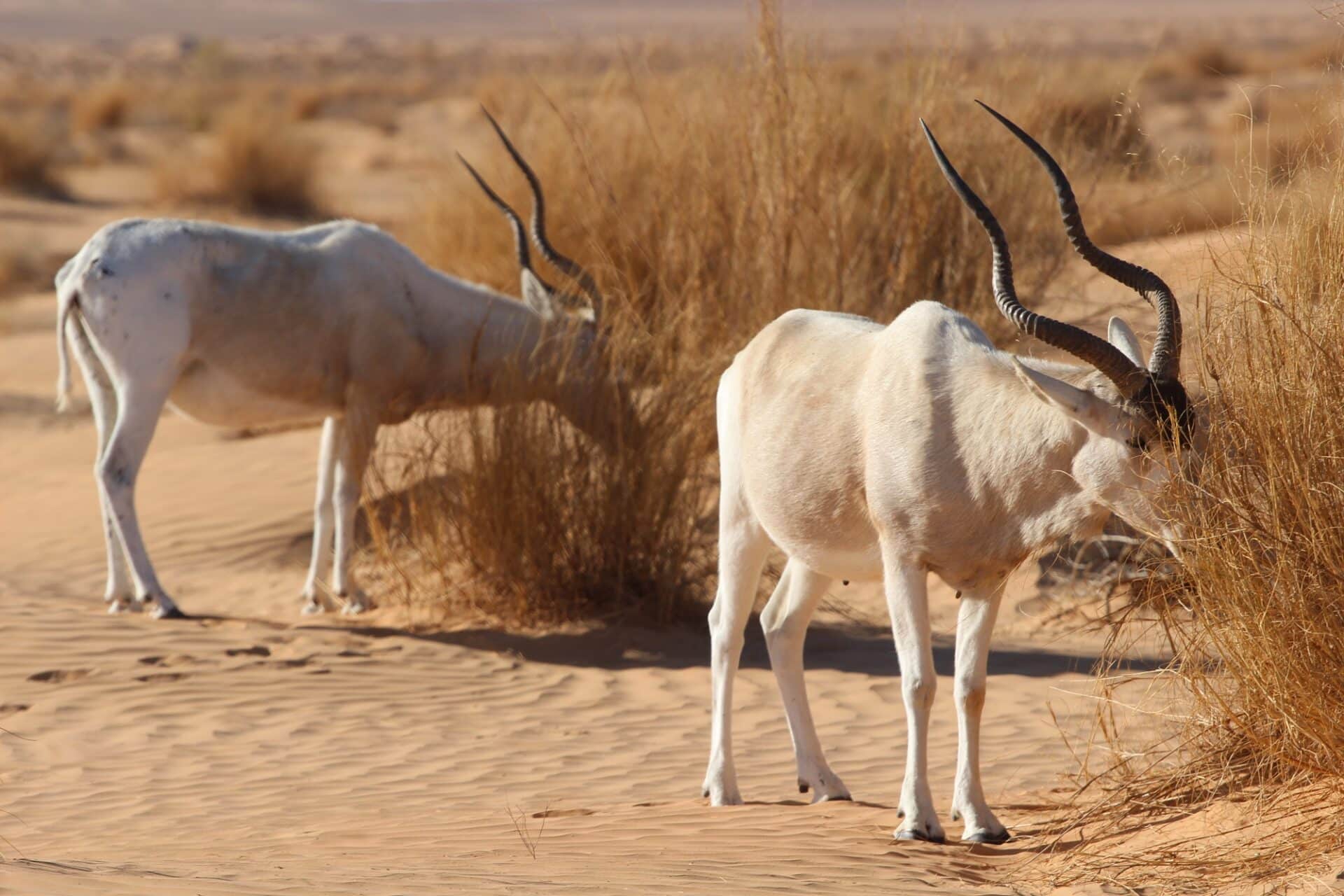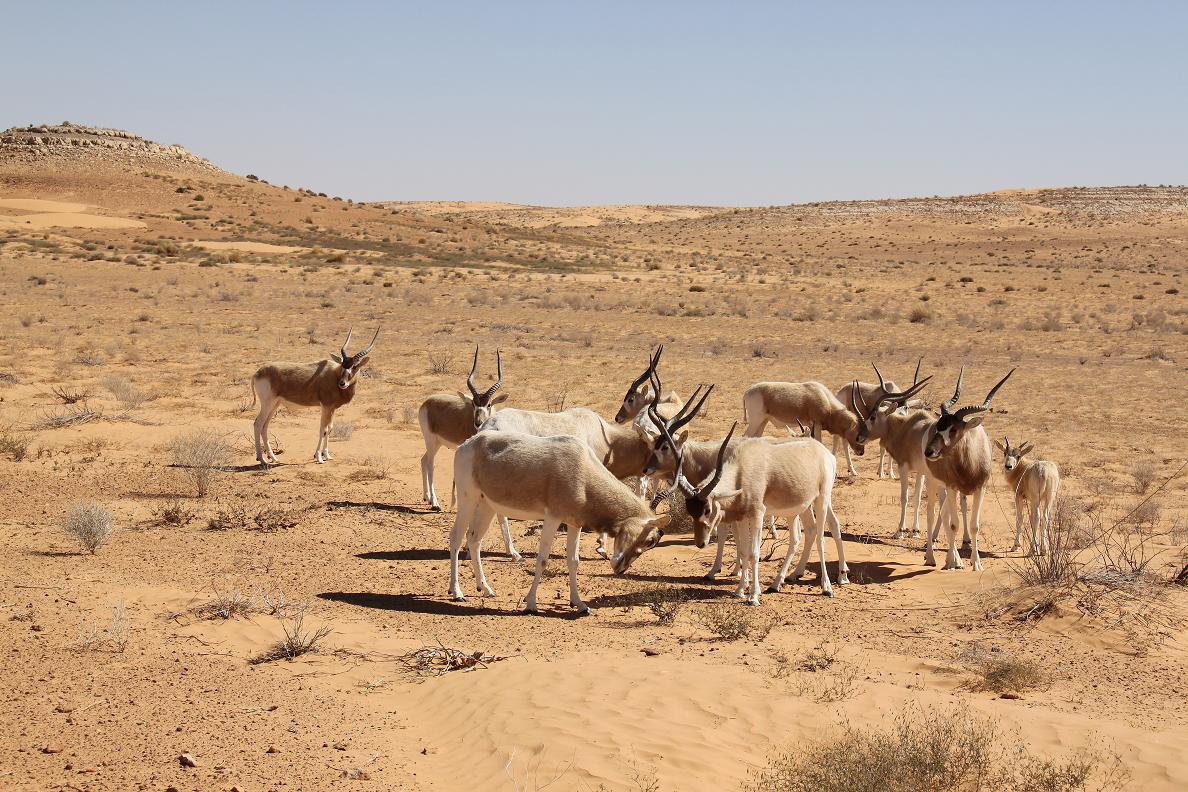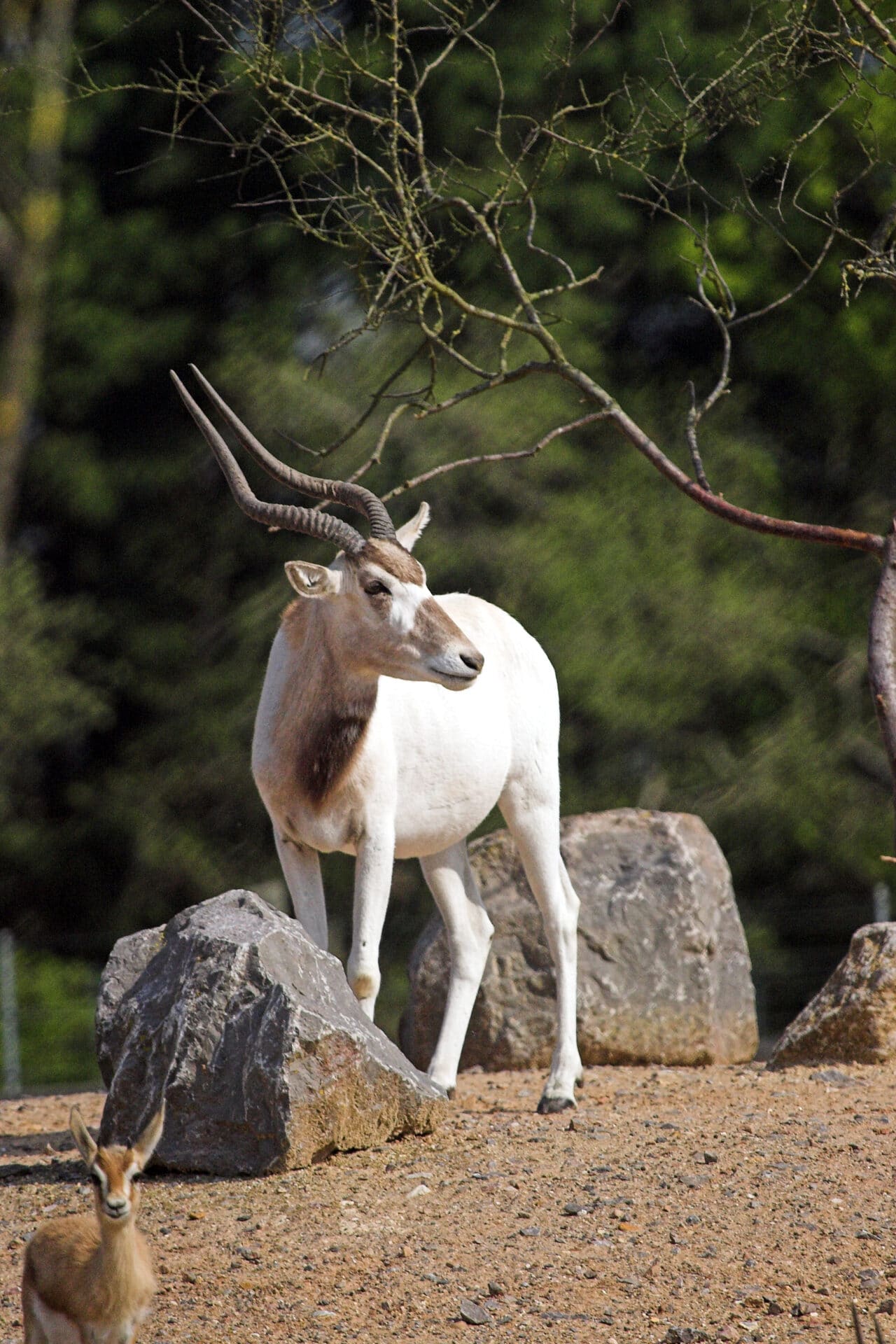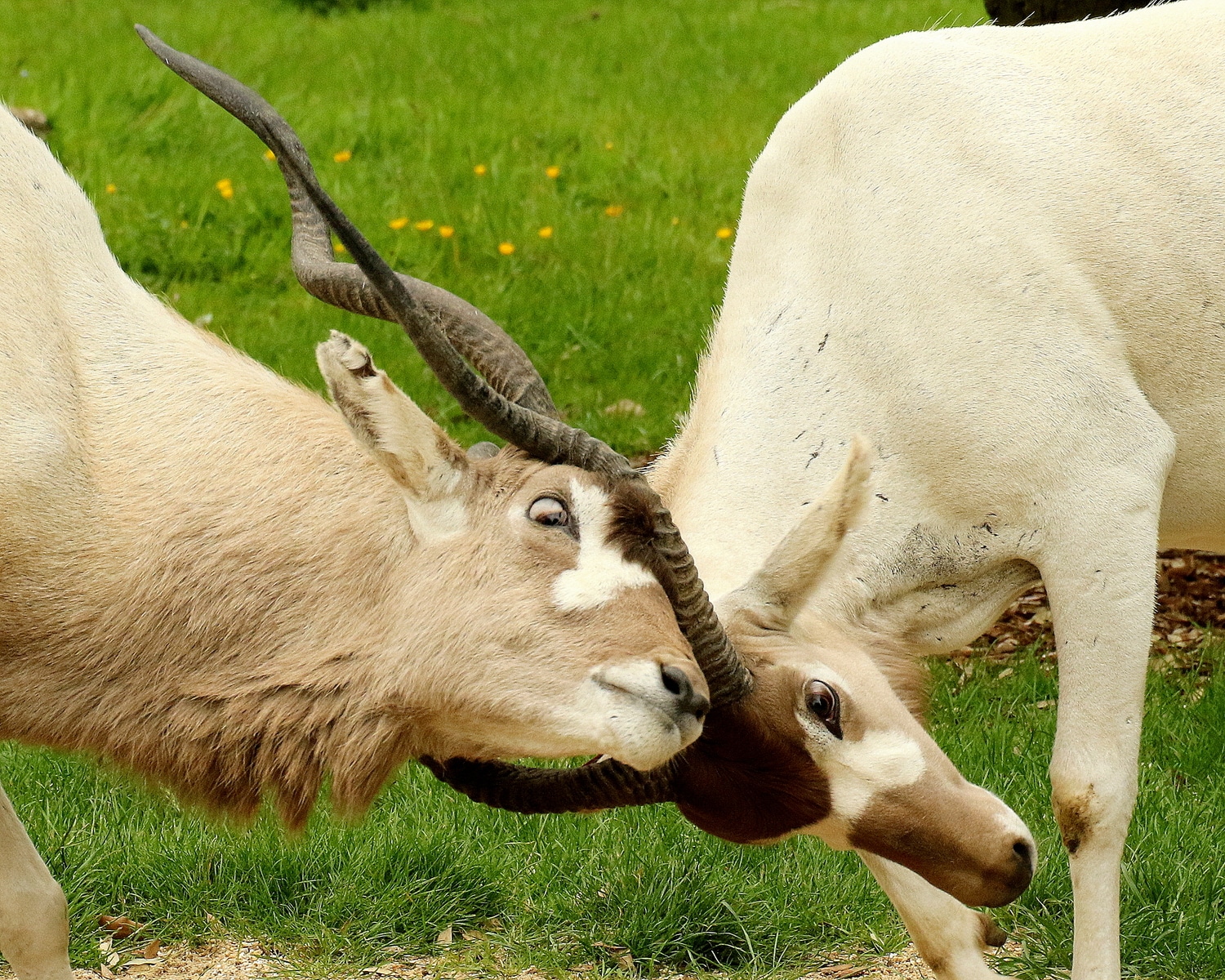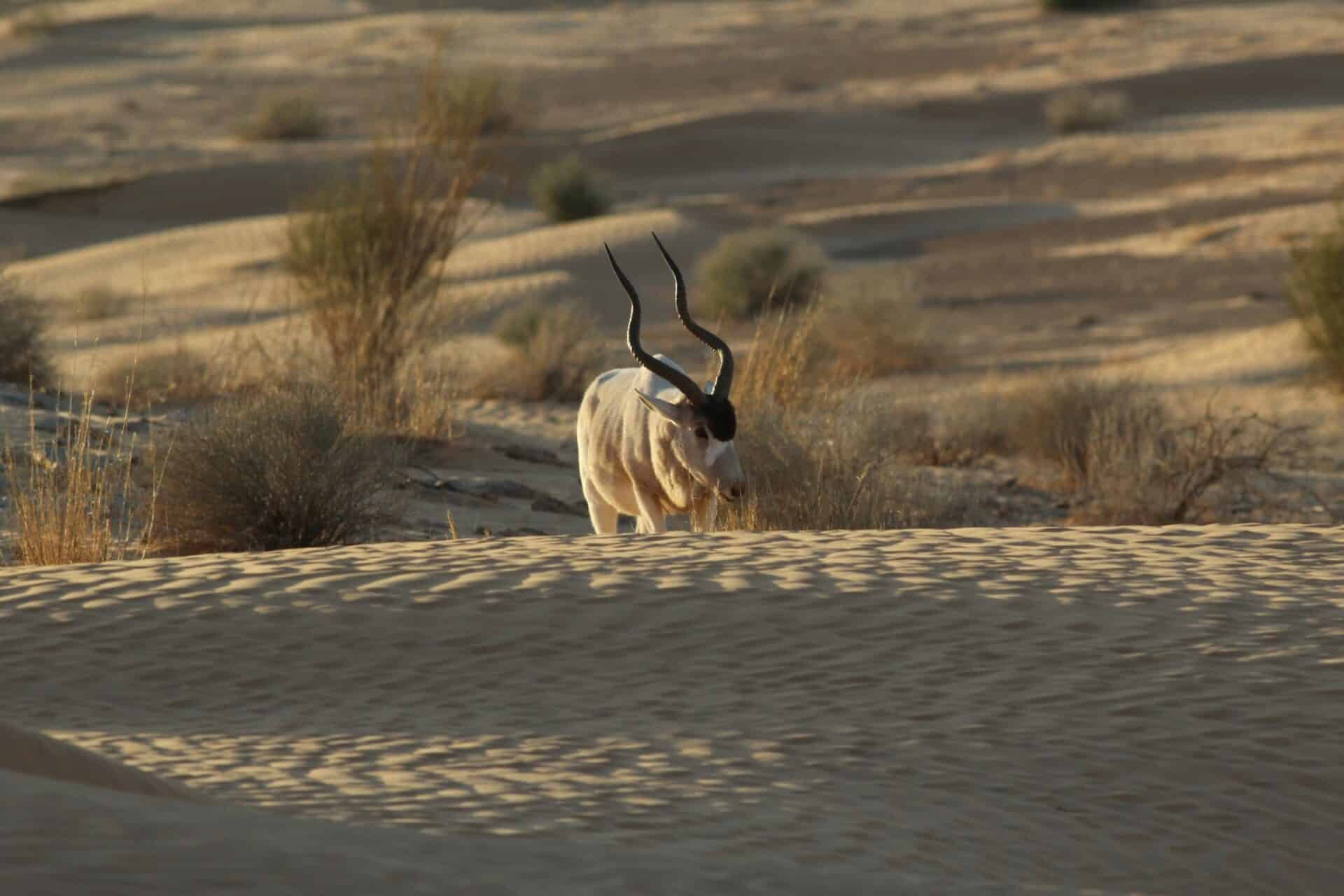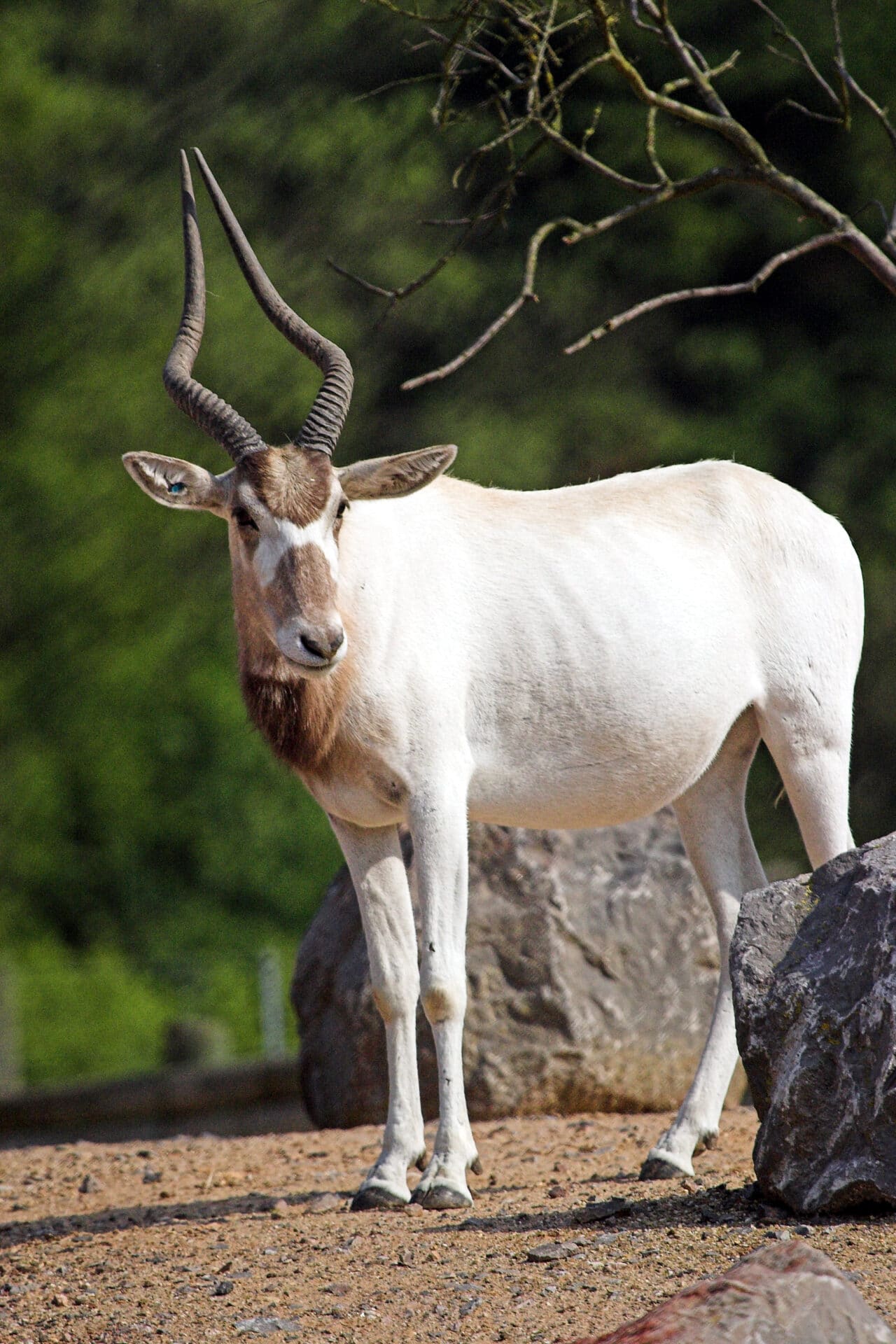Addax
Common Name: Addax
Scientific Name: Addax nasomaculatas
Both male and female addax have horns, but the horns of males can grow up to 109 cm, whereas the female’s only grow up to 80 cm.
Addax live in habitats with extreme temperatures, ranging from -5 to 60° C.
Addax are adapted to living in hot, dry environments. They have a pale coat to reflect the heat, and large hooves which spread out to help them move in sandy habitats.
To help them keep cool, addax will feed in the cooler hours of the day and at night. They find shelter and rest during the hottest parts of the day.
Fast Facts
-
Status
Critically Endangered
-
Size
Head-body: 120-130 cm, shoulder height: 95-115 cm
-
Weight
Males: 100-125 kg, females: 60-90 kg
-
Gestation
257-270 days
-
Young
1
-
Life span
28 years
In the wild
Addax feed on a variety of desert grasses, shrubs and trees. They seek out wild melons because they are a good source of moisture. Addax get all the moisture they need from their diet, so they don’t have to drink water, but they will drink if they find water.
Addax are adapted to living in all the main types of habitat in the Sahara, and used to be found right across the Sahelo-Saharan region of Africa. However, the last sizable population today is found only in a small area of Niger. Addax are able to live in extremely arid habitats, including desert, semi-desert, and gravelly and sandy plains. Addax will travel over large areas in search of food, and may move into grasslands during droughts or after rainfall when the grasses have grown.
Addax calves may be born at any time of the year. They are born in a shallow scrape or in vegetation. The mother will leave her calf hidden away when she joins the herd each day to feed. After two weeks, the calf will join the herd. Calves are weaned between 23 and 29 weeks of age.
Healthy adult addax don’t have any natural predators, but calves are preyed upon by golden jackals.
The primary threat faced by addax is unsustainable hunting for their meat, horns and hide. Their habitat has also been disturbed by oil exploration and an increase in cattle farming. Addax are listed on CITES Appendix I, which means that trade in the animal or any part of its body is illegal. Addax are protected in Morocco, Tunisia and Algeria, and it is illegal to hunt addax in Libya and Egypt. In Niger there are addax present in a large reserve. In Tunisia and Morocco several hundred addax have been released into large fenced enclosures.
